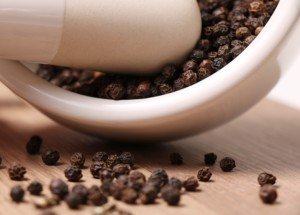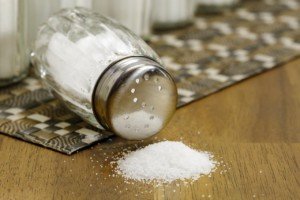You’re probably eating WAY more salt and sodium than you think.
Here are 12 simple ways to lower salt intake to help prevent heart problems down the road.
American Heart Association Daily Salt Intake Recommendations
• Up to 2,300 milligrams (mgs) per day
• Ideally, no more than 1,500 mg/day for most adults
• Exempt from the ideal limit of 1,500 mg/day are adults who lose a lot of salt through sweat such as competitive athletes and those whose jobs involve extended work in a hot environment.
“When we think of salt we think of the white mineral that we use to flavor our food,” says Shana Spence, MS, RDN, CDN, a registered dietitian nutritionist based in New York.
“Our body does need salt to function [one-fourth teaspoon a day]. However, with so many processed foods readily available, it can be easy to over-consume.”
12 Ways to Lower Salt Intake for Better Heart Health
#1 “Cut back on processed foods,” says Spence. “This seems simple, but is also complicated because what is considered processed?
“Anything that has been altered or manipulated is considered processed. Salt is used as a preservative in many foods to retain its ‘freshness.’
#2 “Use spices and herbs as an alternative for flavor instead of salt. Garlic and ginger are amazing spices with tons of flavor. They pack a strong punch and you’ll not need salt with these spices.
#3 “Reach for the black pepper first. We’re sometimes taught that we put both black pepper and salt on our foods together. Try to just put pepper on foods first and you’ll find that you don’t even need the salt.

#4 “Another way to forgo the salt and get in more flavor is opting for spicy as in hot sauces, sriracha, jalapenos, etc. Eating spicy foods is also good for you and can give your metabolism an extra boost!
#5 “Drink more water. Sometimes our cravings can indicate what we need more of in our body. If you’re craving salt, that might be an indication that your body actually needs water.”

#6 “Low sodium broth options. When making soups and stews we sometimes opt for using ready-made broths, but opting for lower sodium is the best choice.
“Remember, you can always add in more herbs and spices for flavors so you don’t need the salt.
#7 “Weaning yourself is important. Cutting out salt completely will not do the trick and could backfire tremendously. Start by mixing unsalted foods with salted foods. For example, take some non-salted nuts and mix with some regular salted nuts.
#8 “Read nutrition labels. Always check the back of food packaging and look for where ‘sodium’ is listed.”
This includes on foods with so-called hidden sodium such as spices, seasoning mixes and condiments. “Try to then opt for foods that have 5% or less of sodium per serving.”
Interception: Do You know what Industry Sleight of Hand Is?
This relates to reading nutrition labels. Avoid being reeled in by food industry trickery.
The nutrition information on the bottle, box or package is arranged to trick you into thinking there’s less sodium in the product than there really is.
This is done by listing a “serving size” that’s often half or one-third the amount of the product in its container, even though most people will eat all of the product in one helping.
For example, one “serving size” of a can of soup is (read the label carefully) actually HALF the can.
So if you pour the whole can in a bowl and eat all of it, you just ate double the “serving size” amount of sodium!
Back to More Ways to Cut Back on Dietary Salt to Make Your Heart Happy
#9. Add chopped nuts, onions and celery to dishes that you’d normally add salt to, such as rice.
#10. Dine out less. Restaurants load dishes with sodium.
#11 And when you do dine out, realize that soups and sauces will be packed with salt. Ask for sauces and dressings on the side. Adding them in yourself will encourage you to consume less sodium.
#12 Beware of other names for salt or sodium: monosodium glutamate, disodium guanylate and fleur de sel. cut back sodium
BONUS Trick for Lowering Salt Intake
Don’t “pinch” the salt out of the bottle.
Though it may seem impossible to pinch more than one-fourth a teaspoon, what often happens is that you’ll think, “Oh, this needs another pinch.”
And you may end up ultimately pinching out too much.
So keep it accurate by using the one-fourth teaspoon measurer.
If you need a lot less than one-quarter teaspoon, then buy a one-eighth teaspoon measurer.


 Shana Spence
Shana Spence









